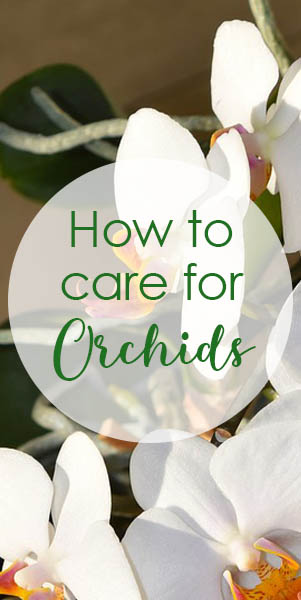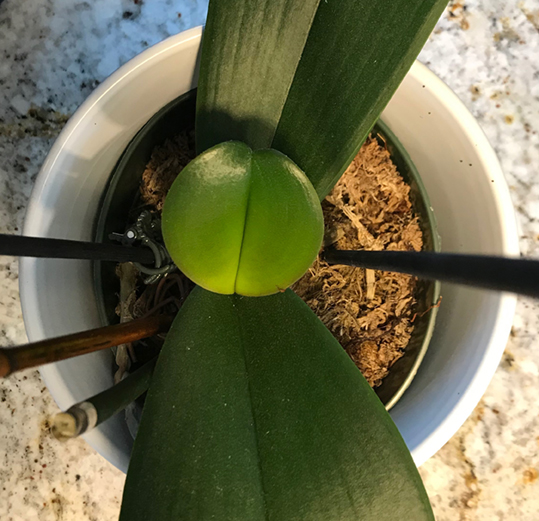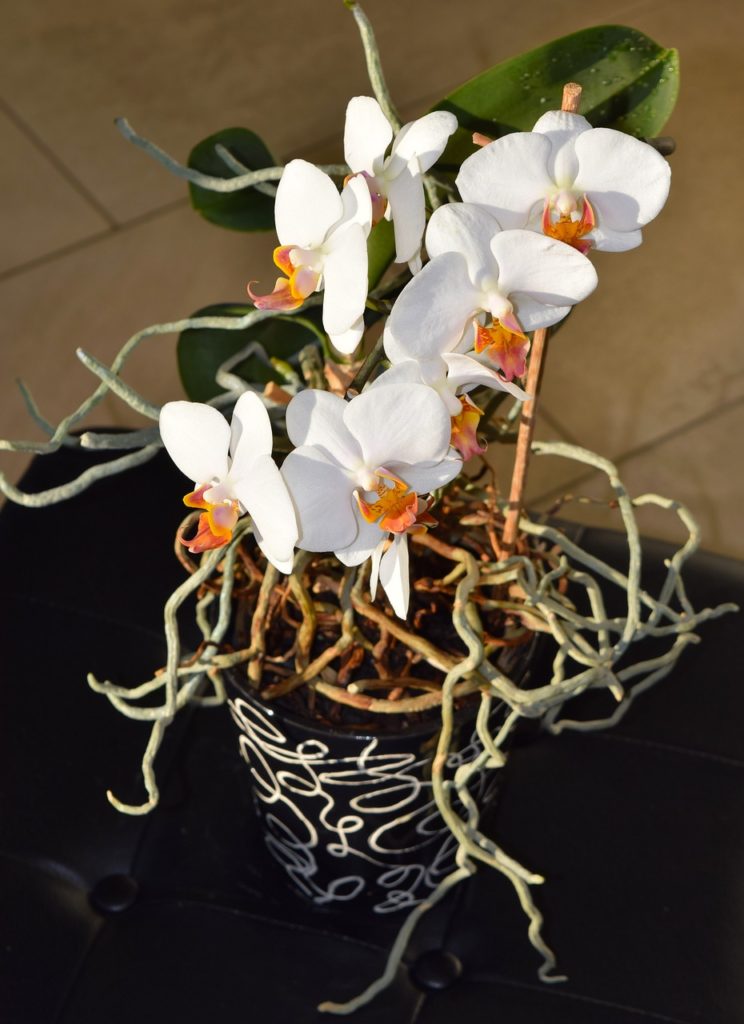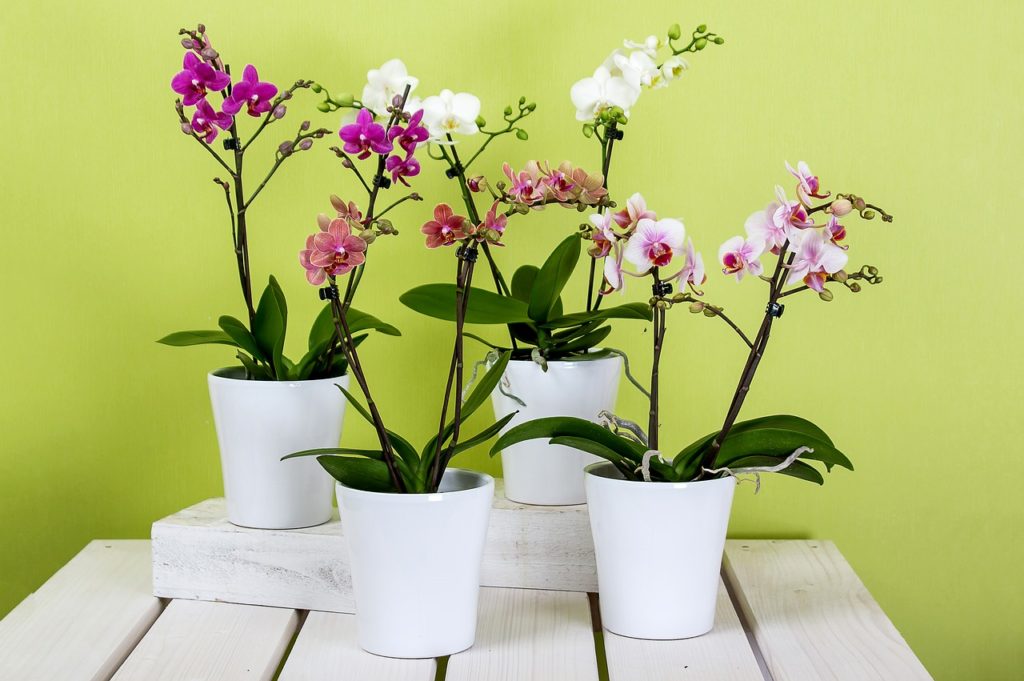
Orchids from the Supermarket and Trader Joe’s
I received an orchid from Trader Joe’s from a lovely friend when I moved to a new house. The bloom was a gorgeous, large grouping of white flowers. The orchid bloomed for at least 3 months. Then the blooms withered and fell off the stalk. So, like many orchid newbies, I kind of panicked and wondered what to do next.
Asking friends, I received many different, contradicting pieces of advice. So, I researched online and this is what I have found about Trader Joe’s orchids.
The orchid I received did not have any identification as to what type of orchid it was. Apparently, there are hundreds of types of orchids, with about 20 types being typically used for house plants.
Trader Joes typically sells phalaenopsis, dendrobiums, and oncidiums. The most typical type of orchid sold at Trader Joes is phalaenopsis, which I think mine is. The orchid came in a ceramic white pot but was planted in a plastic pot with holes in the bottom. The planting medium was sphagnum moss.

The instruction card the orchid came with is pretty simple and merely says
- Water ½ cup per week
- Light – Put in indirect sunlight
- Temperature – Keep 55 – 75 degrees F
That is not much information!
Watering Your Orchid
Orchids like humidity, but not to be wet. So, I have watered mine every 2 weeks until wet. After about 2 weeks, the moss is dry to the touch, and I water again. Never leave standing water in the bottom, as orchid roots rot easily.
Also, be careful to only water the potting mixture, and do not get the plant wet, as it also rots easily.

Light
While the Trader Joe’s orchid care card calls for indirect sunlight, I have read that phalaenopsis like a lot of light. But they do not like to direct, hot sun. So, place your orchid near an east or southerly window that gets at least 6 hours of indirect sunlight per day.
Environment

I have the tendency to move my houseplants around each month to share the sun. However, orchids are creatures of habit. They will acclimate to their spot, and then do not like to get moved. So, once you find a spot that has the right amount of light, leave the orchid there to make its happy home.
A daytime temperature around 75 degrees F and a nighttime temperature of about 65 degrees F is ideal.
Hopefully, orchids can stand cooler temperatures, as we tend to keep the house at about 68. Fingers crossed!
Removing the Stem
After the flowers drop off, if the stem withers and turns brown, you can cut the stem off at the bottom, above one node, or above 2 nodes. I have read all three options online. I cut mine off above the first node.
After the stem is removed, the orchid will grow one or two new leaves. After the new leaves are establishes, hopefully, a new flower stem will grow.

Flowering
Phalaenopsis tend to flower once per year. A new bloom stem will grow up from the soil with shiny green pointed tips. It is time to fertilize when you see the new bloom stem appear. Fertilize with a diluted liquid houseplant fertilizer. As the stem grows, stake it so it does not droop and break.
Fertilizer

The best advice I have read about fertilizer is only fertilize when the orchid is producing flower and a flower stem. If your plant is unhealthy, fertilizer will not cure it! Fertilizer only supports growth in healthy plants.
Repotting an orchid
Every other year or so, it is recommended to repot the orchid. Gently remove the orchid from its pot. Use your fingers to remove old potting mixture from the roots. Cut away any dead roots.
Using a pot with plenty of holes for good aeration, put a couple of inches of potting medium in the bottom. Gently place your root ball in the pot and fill around with more potting medium. Do not tightly pack the potting mixture, as orchids like plenty of air to get to the roots.
Planting medium

There are two types of planting medium best for orchids – bark mixes and sphagnum moss. If you search online, there are many types of mixes for different types of orchids. These include specialized bark mixes
and moss mixes.
The moss mixes will hold water better, so need less watering. However, they could lead to overwatering if not careful. The bark mixes keep the roots dryer and need more frequent watering. Mine came in moss, which has worked well for me so far.
Easy Orchid Care
Don’t be scared if you see all those beautiful orchids for sale at the supermarket or Trader Joe’s. With the right care, they can bloom and flourish in your own home. Be aware of water, light, and temperature, and your orchid will give you beauty for many years to come.
For more information on taking care of houseplants, see Giving Houseplants a Good Home

